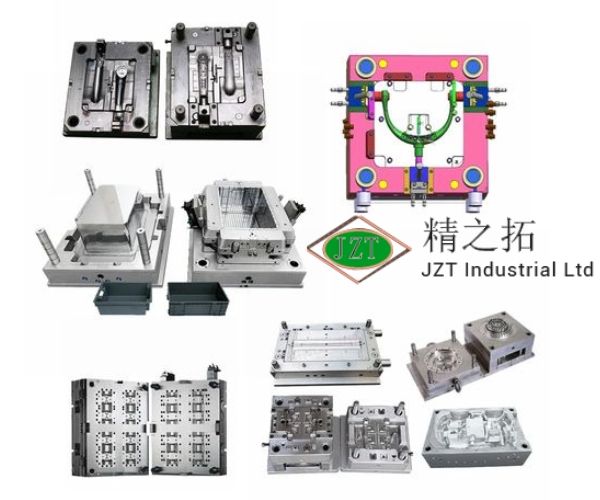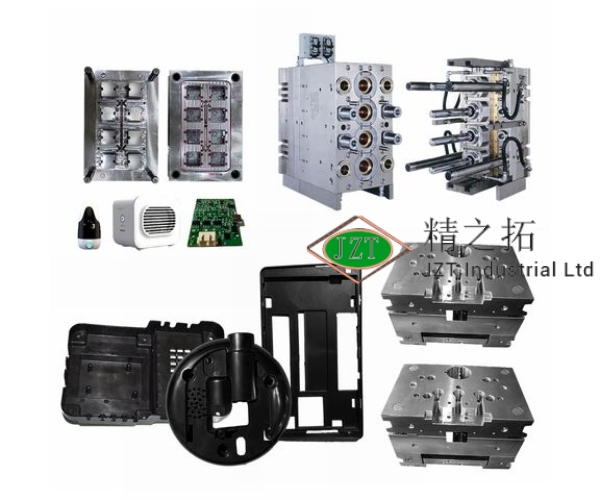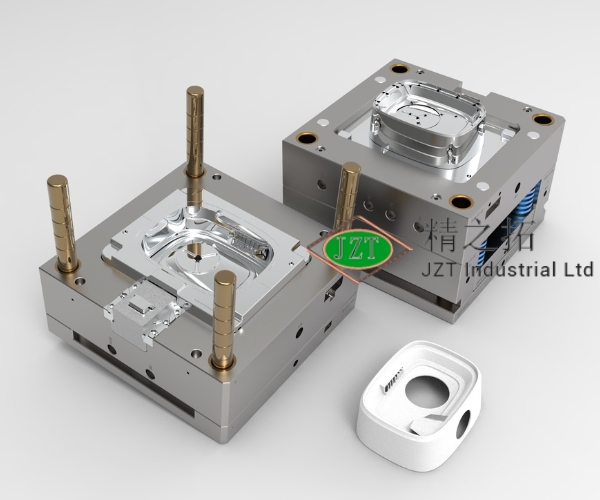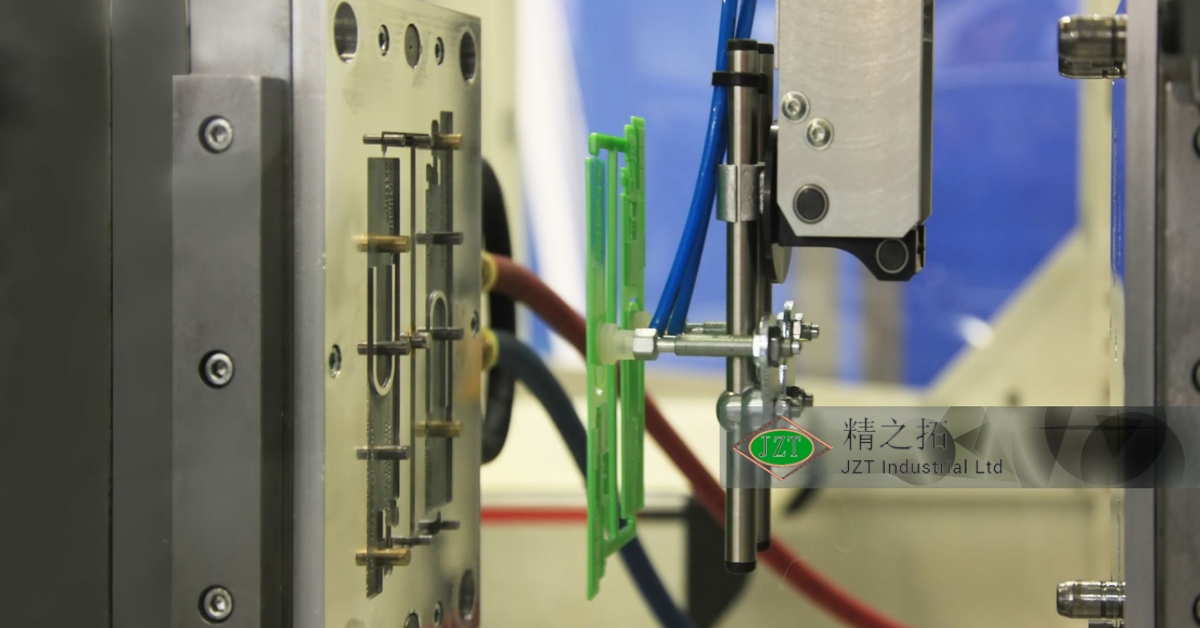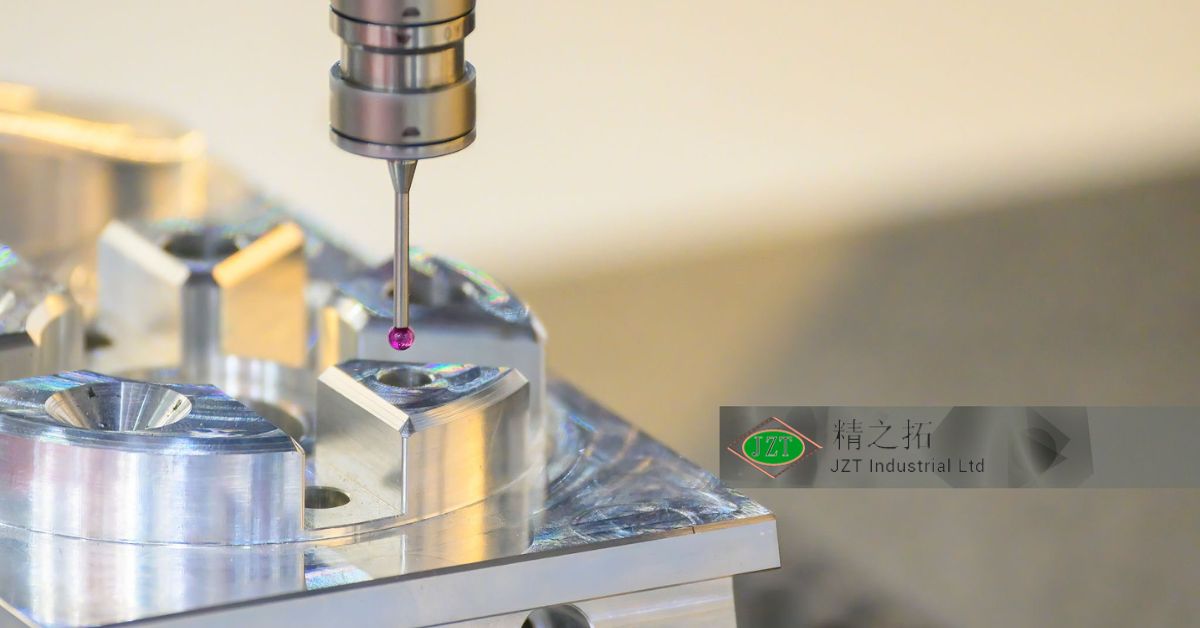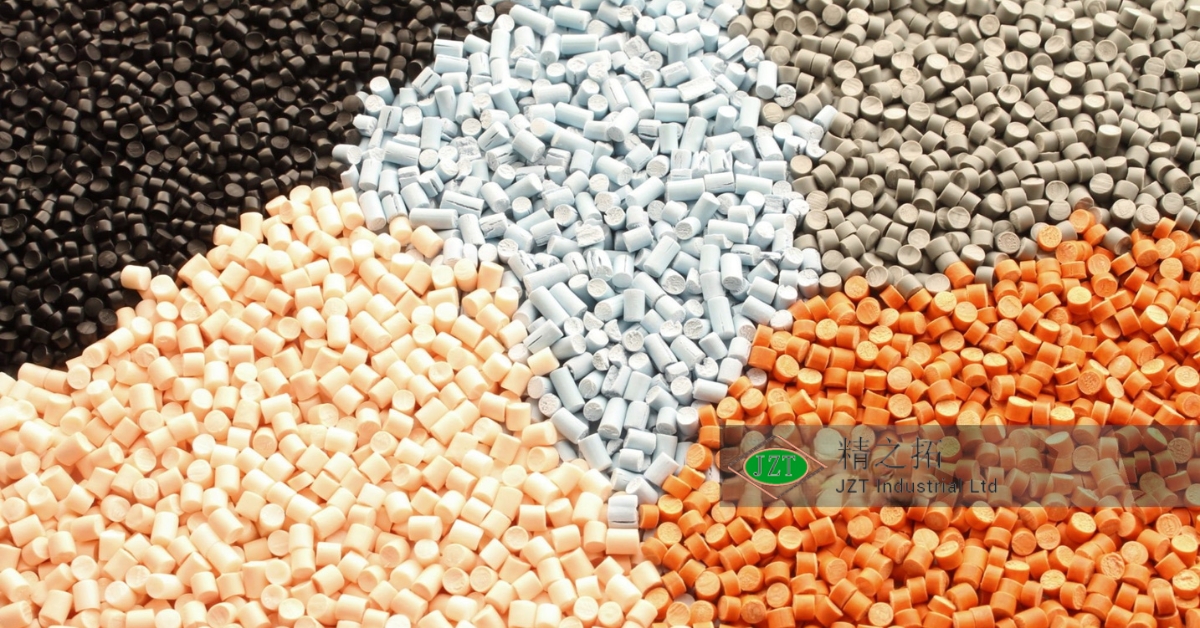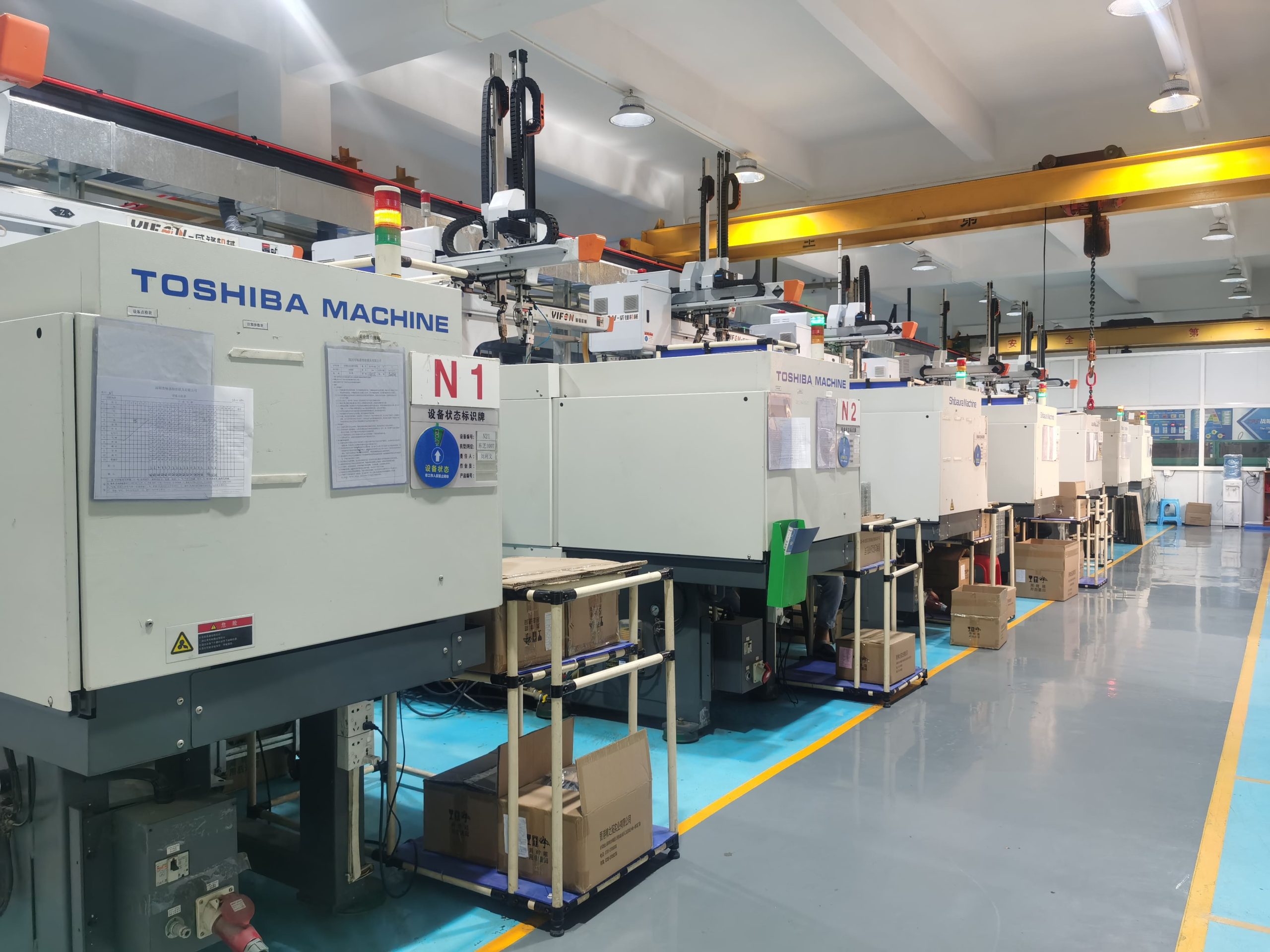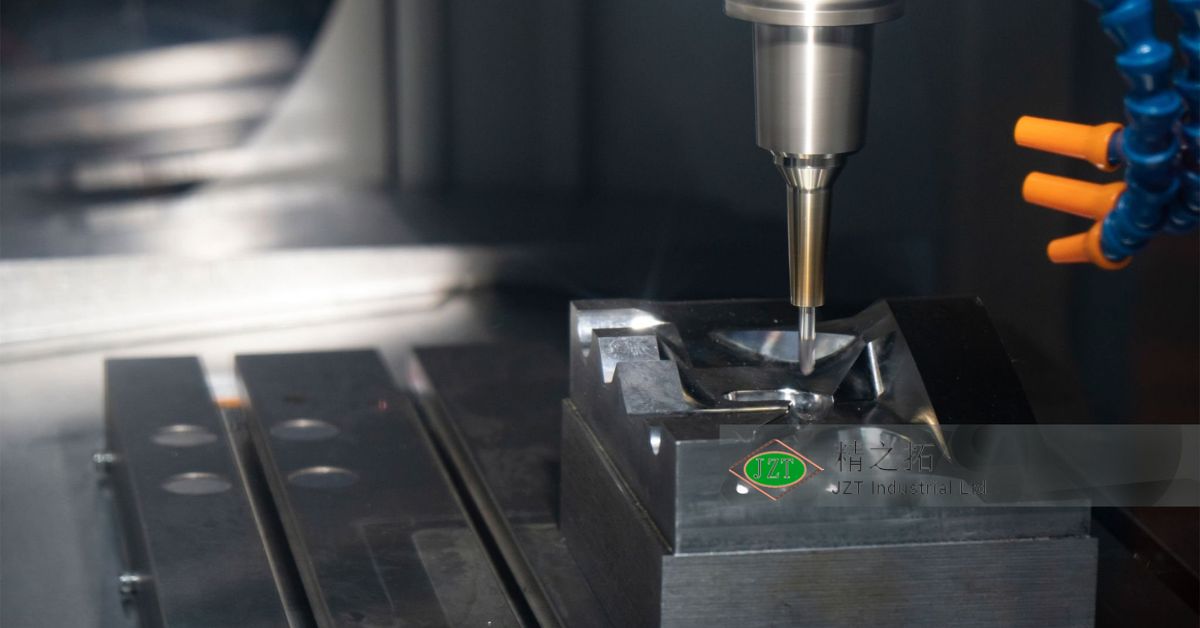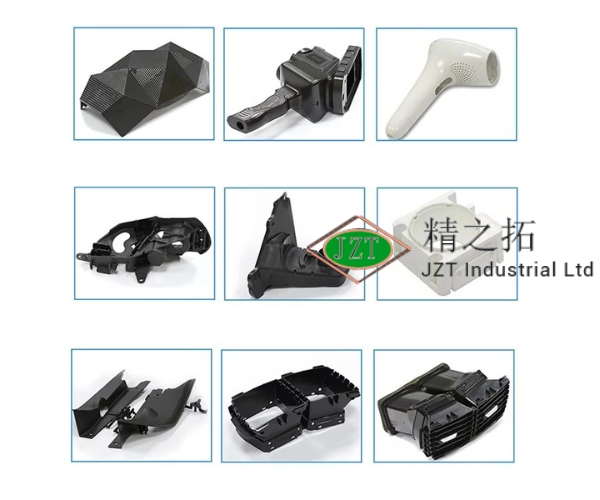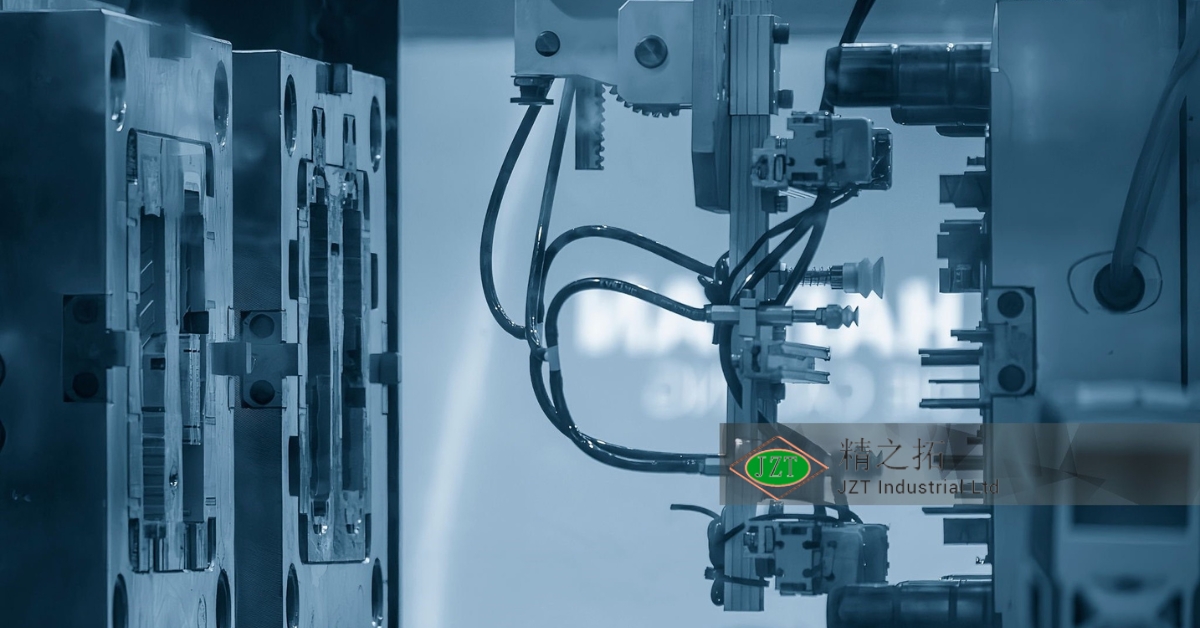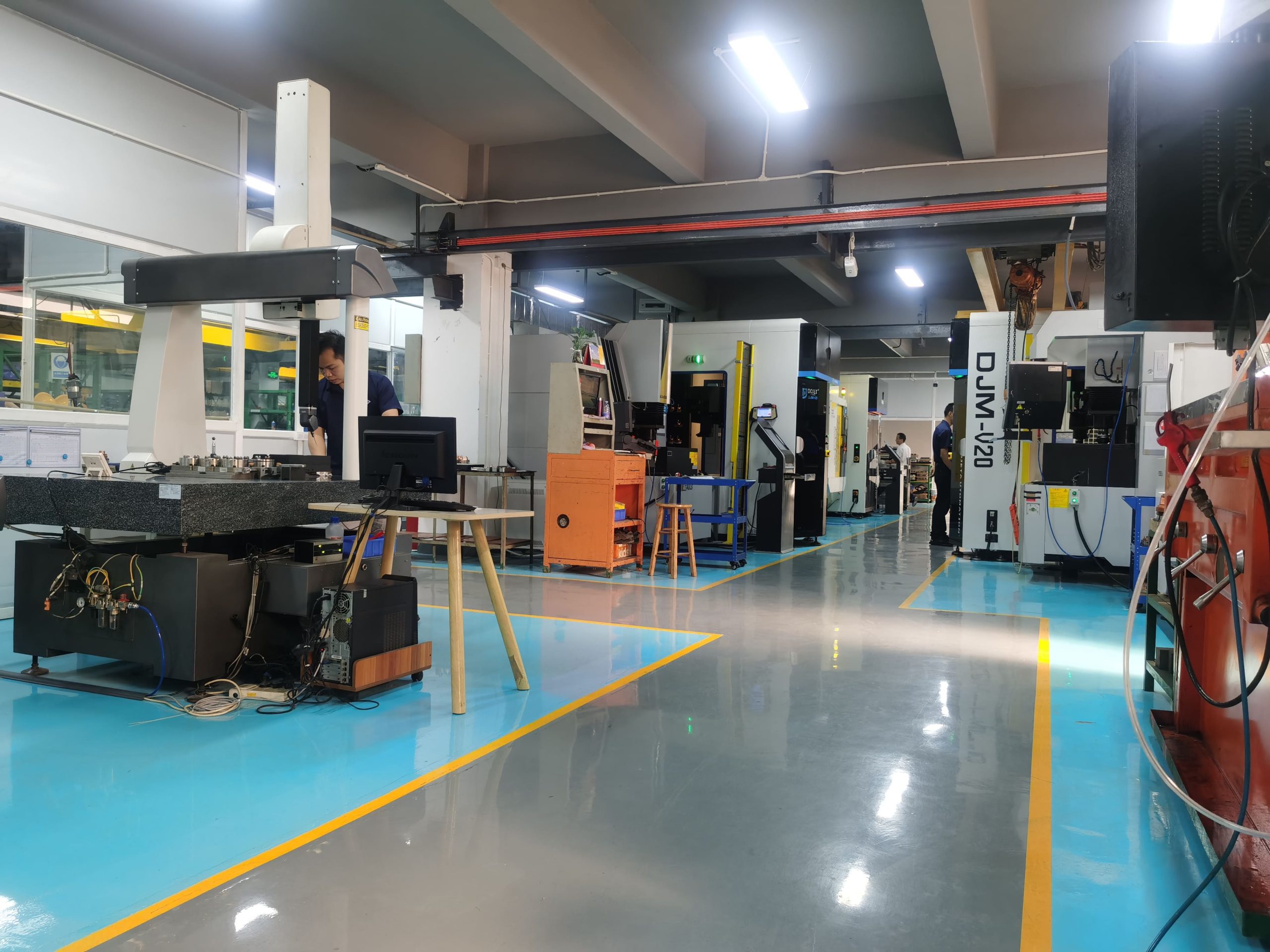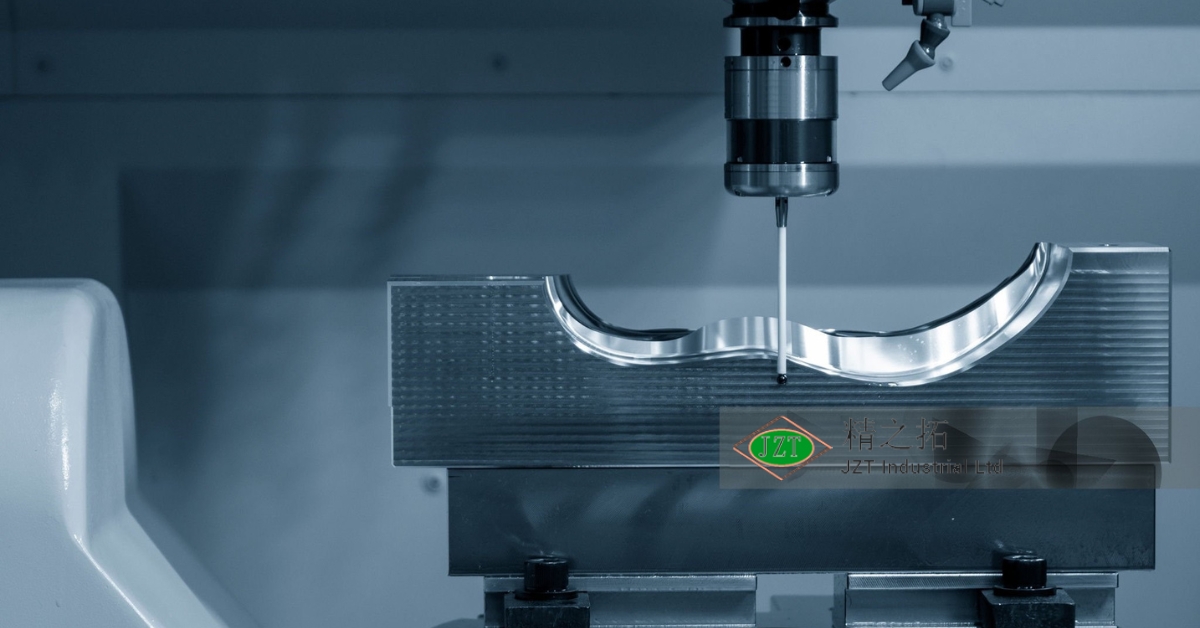Введение
Plastic injection molding is widely used to produce durable, high-quality plastic parts for various industries, including automotive, aerospace, consumer goods, and industrial equipment. However, when it comes to manufacturing large plastic parts, the process presents unique challenges. These parts require specially designed molds and complex manufacturing techniques to ensure consistency, quality, and efficiency. As a result, plastic injection molds for large parts necessitate greater attention to detail and specialized approaches that go beyond standard injection molding practices.
The manufacturing of large plastic injection molds involves handling a higher volume of material, managing complex temperature controls, ensuring precision across a large surface area, and overcoming logistical challenges in mold handling and transportation. This article explores the various challenges associated with producing molds for large plastic parts and offers practical solutions for overcoming these obstacles. By understanding these unique demands and applying advanced techniques, plastic parts manufacturers can achieve high-quality results in large-part production.
Section 1: Understanding the Complexities of Large Part Injection Molding
What Defines a Large Part in Injection Molding?
In the context of plastic injection molding, a “large part” typically refers to components with significant dimensions and weight, such as automotive bumpers, appliance housings, and industrial panels. These parts are often structural or functional elements that require substantial durability, precise engineering, and high-quality finishes. Dimensions vary depending on industry needs, but large parts generally measure several feet in width or height and may weigh several pounds or more. Industries like automotive, aerospace, and heavy equipment commonly rely on large plastic parts for their strength-to-weight ratio, cost-effectiveness, and adaptability.
Creating large plastic injection molds for these parts is particularly challenging because the molds themselves must be equally sizable, durable, and capable of holding precise details across a wide area. Additionally, the plastic injection molding machines used to manufacture large parts must have the power and capacity to handle high clamping forces, ensuring the mold remains securely in place during the injection process. This requirement sets large-part injection molding apart from standard molding practices, as it necessitates specialized equipment and techniques.
Why Large Parts Pose Unique Challenges
Large parts in plastic injection molding present challenges that differ significantly from those encountered in smaller parts. For one, producing large molds requires more robust equipment, increased material handling, and precise control of variables such as cooling, filling, and ejection. The sheer size of these molds makes it difficult to maintain consistent thickness, shape, and finish across the entire part, increasing the likelihood of defects if not managed carefully. Issues like warping, shrinkage, and uneven cooling are more pronounced in large parts due to the larger volume of material and the extended cooling time required.
Furthermore, the design of large molds must account for optimal material flow, as poor flow can lead to defects, such as flow lines, sink marks, and weak points within the part. Achieving uniform material distribution becomes increasingly difficult as the mold size increases. Additionally, the cycle time for large parts is longer due to increased filling and cooling times, making the overall production process slower and potentially more costly. By understanding these unique challenges, manufacturers can better prepare for the complexities involved in large-part injection molding.
Importance of Quality and Consistency for Large Parts
Quality control is essential for all plastic injection molding processes, but it is especially critical for large parts. These parts often serve as structural components or essential elements of larger assemblies, meaning that any defects or inconsistencies can compromise safety and performance. In industries like automotive and aerospace, where large parts must withstand mechanical stress and environmental exposure, quality and consistency are non-negotiable.
Manufacturing plastic injection molds for large parts requires stringent quality control practices, including automated inspection systems, mold flow analysis, and material testing. Any deviation in part dimensions, surface finish, or structural integrity can lead to costly rework, waste, and potential safety hazards. As a result, plastic parts manufacturers must implement robust quality control protocols to ensure that every large part meets the required specifications and performs reliably in its intended application. By prioritizing quality and consistency, manufacturers can reduce waste, improve efficiency, and deliver high-performance custom plastic parts that meet industry standards.
Section 2: Key Challenges in Manufacturing Molds for Large Parts
Design Complexity and Mold Size
Designing plastic injection molds for large parts comes with unique challenges related to mold size and complexity. Large molds must accommodate substantial volumes of material while maintaining precise dimensions, even distribution, and detailed surface features. As the mold size increases, achieving uniform cavity filling and ensuring consistent cooling become more difficult. The structural integrity of the mold also needs to be robust enough to withstand the high clamping forces required during injection, which is essential to avoid defects like flash, where excess material leaks out from the mold due to gaps or misalignment.
The larger the mold, the more complex its internal structure. Designers must carefully position gates, runners, and vents to optimize material flow and prevent common issues such as air pockets and sink marks. Additionally, the mold may require multiple injection points or specialized gating systems to facilitate even distribution of molten plastic throughout the cavity. With large molds, minor design flaws can have significant repercussions on part quality, making it crucial to leverage advanced Computer-Aided Design (CAD) and mold flow analysis tools to refine the mold design before production.
Material Requirements and Challenges
Manufacturing large parts demands substantial amounts of raw material, which creates challenges in material handling, storage, and cost management. For large plastic parts, the materials must be durable enough to handle the increased stress and must possess specific properties to meet industry standards. Materials like polypropylene, polycarbonate, and glass-filled nylon are commonly used, but each comes with handling and cost considerations. For instance, sourcing high volumes of specialized materials can lead to supply chain issues and potentially increased production costs, especially when dealing with high-performance or reinforced polymers.
In addition to procurement, maintaining material consistency is critical to ensure that each part meets quality requirements. Even small inconsistencies in material composition can result in warping, dimensional inaccuracies, or surface imperfections. Quality control measures, such as using pre-compounded materials or automated material feeding systems, can help prevent variations and streamline the production process.
Achieving Consistent Quality Across Large Dimensions
For large parts, maintaining consistent quality across extensive surfaces poses a significant challenge. Large molds increase the risk of uneven cooling, which can lead to defects like warping and shrinkage. Ensuring uniform thickness is another critical factor; if material flow is uneven, it can create thin spots or areas with excess material, impacting the part’s strength and appearance. Moreover, because large parts require longer cooling times, they are prone to dimensional instability if cooling is not carefully managed.
To address these challenges, plastic injection molds for large parts may incorporate multiple cooling channels, strategically placed to promote even cooling. Additionally, advanced mold flow analysis software can simulate how materials will flow and cool within the mold, allowing manufacturers to predict potential defects and optimize the mold design accordingly. By implementing these solutions, manufacturers can achieve consistent part quality and reduce the occurrence of common defects in large plastic parts.
Maintaining Precision and Tolerances
Large parts often require tight tolerances to ensure proper functionality, particularly in industries like automotive and aerospace, where precision is critical. However, maintaining these tolerances across a large mold is challenging. Any misalignment, slight warping, or inconsistencies in material flow can lead to dimensional deviations, which may render the part unusable. For example, slight inaccuracies in a large automotive bumper mold could lead to poor fitment and reduced structural integrity.
One solution to maintaining precision is to use high-quality mold materials and advanced machining techniques to create highly accurate molds. CNC machining, laser cutting, and EDM (Electrical Discharge Machining) are commonly used for creating intricate details and ensuring precise dimensions within the mold. Additionally, automated quality control tools, like 3D scanning and optical inspection systems, can detect deviations during production, allowing manufacturers to make adjustments in real-time and maintain tight tolerances across all parts.
Handling and Transportation of Large Molds
The logistics of handling and transporting large molds present unique challenges. Large molds can weigh several tons, making them difficult to move without specialized equipment. Transporting these molds requires careful planning and coordination, as they need to be securely handled to prevent damage during transit. Storage is another logistical consideration; large molds require ample space in the production facility, along with dedicated storage solutions that ensure safety and accessibility.
To facilitate handling and transportation, manufacturers often use heavy-duty cranes, forklifts, and custom storage racks designed to hold large molds securely. Additionally, implementing standardized handling procedures and training employees on safe handling practices is crucial to preventing accidents and ensuring that molds remain in optimal condition. Efficient logistics systems minimize downtime and streamline the production process, allowing manufacturers to manage large molds effectively.
Cycle Time and Cooling Challenges
Cycle time in plastic injection molding refers to the total time required to complete one production cycle, from filling the mold to cooling and ejecting the part. For large parts, cycle times are significantly longer due to the increased volume of material and extended cooling durations. This slower cycle can impact production efficiency, especially for high-volume orders. Cooling is one of the most time-intensive stages, as large parts require more time to cool evenly to prevent defects like warping or internal stress.
To mitigate these challenges, manufacturers can implement advanced cooling techniques such as conformal cooling channels, which are designed to match the contours of the mold cavity, promoting more efficient heat dissipation. Using temperature-controlled water or coolant systems can further reduce cooling times and improve cycle efficiency. By optimizing the cooling process, manufacturers can reduce cycle times, increase productivity, and minimize energy costs associated with extended cooling durations in large-part production.
Section 3: Solutions and Best Practices for Overcoming Large Part Injection Molding Challenges
Optimized Mold Design and Engineering
Designing molds for large parts requires a comprehensive approach that takes into account the unique challenges of size, material flow, and cooling. By optimizing the mold design, manufacturers can reduce cycle times, prevent common defects, and achieve more consistent results. Using CAD software and mold flow analysis tools, designers can simulate material flow and cooling patterns, identifying potential issues such as air traps, weld lines, and areas prone to warping. These simulations allow for design adjustments before production, which saves time and reduces waste.
One effective approach to optimizing mold design for large parts is to create multi-cavity molds or add additional injection points to ensure even distribution of material. By strategically positioning gates and vents, manufacturers can enhance material flow and minimize the risk of defects. Additionally, using ribbed designs or core-out sections in thick areas can help reduce material usage and improve cooling efficiency without compromising part strength. An optimized mold design not only improves quality but also enhances production efficiency, providing manufacturers with a cost-effective solution for large part injection molding.
Advanced Materials for Mold Construction
The materials used to construct large molds must withstand high clamping forces, maintain precision over extended cycles, and resist wear from high-volume production. Hardened steel and specialty alloys are commonly used for large molds, as they offer the durability and strength required to handle these demands. Advanced materials like P20 steel and H13 tool steel are widely preferred for their high wear resistance and ability to maintain structural integrity under stress.
By selecting high-quality materials for mold construction, manufacturers can reduce maintenance requirements and extend the mold’s lifespan, improving overall ROI. Additionally, implementing protective coatings, such as nickel or chrome plating, can further enhance mold durability by preventing corrosion and wear. Investing in high-performance mold materials not only ensures reliable performance but also reduces downtime and repair costs, making it an essential consideration for large-part production.
Enhanced Cooling Systems and Techniques
Cooling is critical to achieving consistent quality in large parts, as uneven cooling can lead to warping and other dimensional defects. Conformal cooling channels, which are custom-designed to follow the shape of the mold cavity, are one solution to promote efficient heat transfer and ensure even cooling. This technique reduces the occurrence of hot spots and minimizes cycle time, leading to faster production without sacrificing quality.
Another effective cooling technique is the use of baffles and heat pipes, which direct coolant to areas that are difficult to reach with conventional cooling channels. Baffles increase the surface area exposed to coolant, improving cooling efficiency, while heat pipes can transfer heat away from critical areas. By implementing these advanced cooling solutions, manufacturers can achieve faster cycle times and improve the consistency of large plastic parts, ultimately enhancing production efficiency and product quality.
High-Pressure and Specialized Injection Machines
Large parts require injection molding machines with sufficient clamping force and pressure capacity to handle the size and complexity of the mold. Specialized high-pressure machines are designed to inject large volumes of material quickly and evenly, which is essential for avoiding defects like short shots or incomplete fills. Machines with enhanced clamping force prevent mold separation during injection, reducing the risk of flash and ensuring dimensional accuracy.
In some cases, manufacturers may use gas-assisted injection molding, which involves injecting nitrogen gas into the mold to create hollow sections within thick parts. This technique reduces material usage, improves cooling times, and minimizes part weight, making it ideal for large, structural components. By investing in specialized injection machines tailored to large-part production, manufacturers can optimize efficiency and meet the high standards required for large plastic injection molds.
Automated Quality Control and Inspection Systems
Ensuring the quality of large plastic parts requires accurate inspection systems that can quickly detect defects and measure dimensional accuracy. Automated quality control systems, such as 3D scanning and optical inspection tools, enable manufacturers to verify part dimensions and surface quality in real-time. These systems can identify issues like warping, shrinkage, or incomplete fills, allowing manufacturers to address problems immediately and reduce waste.
Automated inspection systems are particularly valuable in large-part production, where manual inspection is time-consuming and prone to error. By implementing real-time monitoring and quality control technologies, manufacturers can improve consistency, reduce rework, and maintain the high standards required for large plastic parts. This investment in quality control not only enhances part reliability but also contributes to cost savings by minimizing defects and optimizing production efficiency.
Efficient Material Handling and Storage Solutions
Managing large molds and the substantial volumes of material required for large parts presents logistical challenges. Efficient material handling systems, such as automated feeding and centralized storage, streamline the production process and reduce material handling time. Additionally, storing large molds requires dedicated space and specialized equipment, like heavy-duty racks and cranes, to ensure safe and efficient movement.
Implementing a well-organized storage and handling system helps manufacturers prevent accidents, minimize downtime, and improve productivity. Custom storage solutions for large molds ensure that these valuable assets are protected from damage, reducing the risk of costly repairs and replacements. By investing in efficient material handling and storage solutions, manufacturers can optimize their workflow and manage large-part production more effectively.
Section 4: Innovations and Technologies in Large Part Injection Molding
Mold Flow Analysis and Simulation Tools
One of the most valuable innovations in manufacturing plastic injection molds for large parts is the use of mold flow analysis and simulation tools. Mold flow analysis simulates the behavior of molten plastic within the mold, allowing manufacturers to identify potential issues, such as air traps, weld lines, and uneven filling. By visualizing how plastic flows through the mold, designers can optimize gate placement, runner systems, and cooling channels to achieve even material distribution and consistent part quality.
Simulation tools help manufacturers make informed decisions during the design phase, reducing the risk of costly adjustments and rework. By predicting issues before physical production begins, mold flow analysis minimizes the chances of defects like short shots, flash, or warping. These tools are especially beneficial in large-part production, where minor inconsistencies can have a substantial impact on final quality. Incorporating mold flow analysis into the design process enhances accuracy, efficiency, and reliability, leading to high-quality molds tailored to large part requirements.
Conformal Cooling and Additive Manufacturing for Molds
Conformal cooling channels represent a significant advancement in cooling technology, especially for large-part injection molding. Unlike traditional straight-line cooling channels, conformal cooling channels follow the geometry of the mold, providing a closer, more uniform cooling effect. This innovation greatly improves temperature management, reducing cycle times and enhancing part quality by preventing issues like warping and internal stress.
Additive manufacturing, or 3D printing, plays a key role in creating complex cooling channels within molds. By using 3D printing to construct molds or specific mold components, manufacturers can incorporate intricate cooling designs that would be difficult or impossible to achieve with conventional machining methods. The combination of conformal cooling and additive manufacturing technology results in molds that support faster, more efficient production cycles and consistent quality, making them invaluable for large part injection molding.
Gas-Assisted and Foam Injection Molding Techniques
Gas-assisted injection molding and foam injection molding are innovative techniques designed to reduce weight and material usage while maintaining part strength. In gas-assisted molding, nitrogen gas is injected into the mold cavity after the molten plastic, creating hollow sections within the part. This approach is particularly useful for large parts, as it minimizes material usage, reduces weight, and improves cooling times without sacrificing structural integrity.
Foam injection molding, on the other hand, involves introducing a foaming agent into the plastic melt, resulting in parts with a cellular internal structure. This technique is ideal for large parts where lightweighting is a priority, such as in automotive and aerospace applications. Both gas-assisted and foam injection molding provide manufacturers with cost-effective solutions for producing durable, lightweight parts, enhancing overall efficiency while maintaining quality and strength.
Automation and Robotics for Handling Large Parts
Handling and assembling large plastic parts is labor-intensive and requires precision to avoid damage. Automation and robotics have transformed large-part production by offering efficient, safe solutions for part handling, assembly, and inspection. Robotics can be used to remove parts from molds, transport them to storage or assembly areas, and even perform tasks like trimming and finishing, which are crucial for maintaining quality and consistency in large parts.
The use of collaborative robots, or cobots, allows for close collaboration between humans and robots, streamlining operations while reducing the risk of human error. Automated systems help manufacturers reduce labor costs, improve production rates, and ensure consistent handling of large parts. By incorporating robotics into the production process, manufacturers can achieve higher efficiency, enhance safety, and maintain precision across each stage of large part injection molding.
Smart Manufacturing and Industry 4.0 Integration
Industry 4.0 technologies, including IoT (Internet of Things) and smart manufacturing, have introduced new levels of efficiency and control in large part injection molding. Smart sensors installed within molds and machines provide real-time data on temperature, pressure, and cycle times, enabling manufacturers to monitor production conditions and make adjustments as needed. This data-driven approach allows for predictive maintenance, which minimizes downtime by addressing potential equipment issues before they impact production.
Smart manufacturing also supports remote monitoring and centralized control across multiple facilities, making it easier for manufacturers to manage large-part production at scale. Industry 4.0 technologies not only optimize production but also enhance quality control by ensuring consistent conditions across each cycle. By integrating IoT and smart manufacturing tools, plastic parts manufacturers can improve productivity, reduce costs, and ensure the quality of large parts meets industry standards.
Section 5: Cost Considerations and ROI in Large Part Mold Manufacturing
Upfront Costs and Investment in Tooling
Manufacturing molds for large plastic parts requires a significant upfront investment due to the complexity of the mold design, the cost of high-quality materials, and the need for specialized equipment. Large molds are often made from durable, heat-resistant materials like hardened steel, which can withstand the pressures of high-volume production. The initial cost of designing and fabricating these molds is higher than for standard molds, but this investment is essential to achieve the necessary quality and durability.
Although the upfront costs are considerable, large-part molds are designed for high-volume production, meaning the per-part cost decreases significantly over time. Manufacturers typically conduct a detailed ROI analysis to estimate the long-term savings and benefits of investing in high-quality large molds. By ensuring that the mold meets the requirements for durability and precision, manufacturers can offset the initial costs through improved production efficiency and reduced maintenance needs, ultimately making the investment worthwhile.
Balancing Quality with Cost Efficiency
Producing high-quality large parts while maintaining cost efficiency is a balancing act. Manufacturers must consider the performance requirements of the part, the quality of materials used, and the complexity of the mold design to achieve the desired outcome within budget constraints. Using advanced techniques, such as conformal cooling and gas-assisted molding, can help optimize material usage and reduce cycle times, enhancing cost efficiency without sacrificing quality.
Another approach to balancing quality with cost is selecting cost-effective materials for non-critical areas while using premium materials for high-stress sections of the mold. Additionally, implementing quality control measures, such as automated inspection systems, reduces the risk of rework and waste, which can be costly in large-part production. By carefully managing each aspect of the manufacturing process, manufacturers can achieve high-quality results at a sustainable cost.
Evaluating Long-Term Maintenance and Durability Costs
Durability is essential for large-part molds, which are subject to high pressures and frequent use. Regular maintenance, such as cleaning, lubrication, and checking for wear, is necessary to keep the mold in optimal condition. High-quality materials, such as hardened steel, and protective coatings, like nickel or chrome plating, extend mold lifespan by preventing corrosion and reducing wear.
Predictive maintenance, made possible through Industry 4.0 technologies, allows manufacturers to identify potential issues before they lead to mold damage or production delays. By using data from sensors within the mold, manufacturers can schedule maintenance at the most efficient times, minimizing interruptions to the production process. Long-term maintenance strategies enhance the durability of large molds, maximizing ROI and ensuring consistent part quality over extended production runs.
Maximizing Production Volume to Improve ROI
The significant upfront investment in large-part molds is often justified by high production volumes, which lower the cost per unit and improve ROI. Large molds are ideal for mass production because they can produce thousands of parts with minimal variation, making them cost-effective for industries like automotive and aerospace, where high volumes are common. By running the mold for long production cycles, manufacturers can spread the initial investment across more units, reducing the per-part cost.
For custom plastic parts, where precision and quality are essential, large molds provide a competitive advantage by enabling consistent output at scale. This scalability helps manufacturers meet market demands efficiently and maximize profitability. High production volumes not only reduce costs but also enhance operational efficiency, ensuring that the initial mold investment yields a favorable ROI.
Section 6: Case Studies and Real-World Applications of Large Part Injection Molding
Automotive Industry Applications
The automotive industry relies heavily on large plastic parts, including bumpers, dashboards, and door panels, to reduce vehicle weight while maintaining structural integrity. Large plastic injection molds used for these parts must meet strict standards for safety, impact resistance, and aesthetic quality. Automotive manufacturers face challenges related to cooling, precision, and durability when producing these parts, but advanced cooling systems, high-strength materials, and automated quality control have enabled consistent, high-quality results.
Aerospace and Defense Applications
In aerospace and defense, large plastic parts are used for structural panels, interior components, and protective enclosures, where weight reduction is critical. Aerospace-grade materials, such as high-performance composites, provide the strength needed for large parts exposed to mechanical stress and environmental extremes. Through innovations like gas-assisted molding and lightweight materials, aerospace manufacturers produce parts that meet rigorous safety standards while minimizing weight, supporting fuel efficiency and durability.
Appliance and Consumer Goods
Appliances like refrigerators and washing machines often feature large plastic components, such as exterior panels and inner drums, which must be both durable and visually appealing. Large plastic injection molds for these parts enable high-volume production with consistent surface finishes and precise dimensions. Advanced cooling and quality control systems are especially beneficial in consumer goods manufacturing, where product appearance and performance play a significant role in customer satisfaction.
Industrial and Heavy Equipment Parts
Industrial equipment, from construction machinery to agricultural vehicles, relies on large plastic parts that can withstand harsh operating conditions. Components like large housings, enclosures, and protective panels require materials with high impact resistance and durability. Manufacturers use reinforced plastics, such as glass-filled polymers, to enhance strength and durability in these heavy-duty applications. The ability to produce large, high-strength parts efficiently allows manufacturers to support industrial demands with reliable custom plastic parts.
Часто задаваемые вопросы (FAQ)
- What are the biggest challenges in manufacturing molds for large plastic parts?\
The main challenges include managing uniform cooling, achieving high precision, handling large mold logistics, and balancing cycle times with part quality. - How do conformal cooling channels benefit large part injection molding?\
Conformal cooling channels improve heat dissipation by following the mold’s geometry, resulting in shorter cycle times and enhanced part quality by preventing warping and uneven cooling. - What are some common materials used for large part molds?\
High-strength materials like hardened steel, P20 steel, and advanced alloys are commonly used due to their durability and resistance to high pressures and temperatures. - What role does automation play in large part injection molding?\
Automation, including robotics and real-time monitoring, enhances efficiency, reduces labor costs, and minimizes human error, ensuring consistent handling and quality for large parts. - How can manufacturers optimize costs for large part injection molding?\
By implementing advanced cooling, selecting cost-effective materials, and maximizing production volumes, manufacturers can reduce per-unit costs and achieve a higher ROI.
Заключение
Producing plastic injection molds for large parts presents a unique set of challenges, from maintaining consistent quality to managing extended cooling times and high material volumes. By addressing these obstacles through advanced mold design, optimized cooling solutions, specialized machinery, and Industry 4.0 technologies, manufacturers can overcome the complexities of large-part injection molding. Investing in high-quality materials, predictive maintenance, and automation further enhances efficiency and long-term profitability.
For plastic parts manufacturers, adapting to these industry innovations and leveraging best practices for large-part production can provide a competitive edge. By understanding the challenges and applying these solutions, manufacturers can meet the demands of large-part applications in industries like automotive, aerospace, and heavy equipment, delivering custom plastic parts that excel in quality, durability, and performance.

